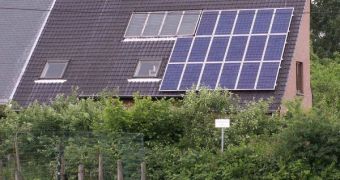Regular solar cells are expected in the near future to be replaced by thin film cells, which are both cheaper and more efficient. Their costs are driven down by the fact that they require less material to construct, while their quality is boosted by the new materials it incorporates, and also its reduced thickness. Just recently, scientists in the University of Luxembourg' photovoltaics laboratory have announced the creation of the first panel featuring this type of cells. Additionally, the second type of thin cells does not require the expensive and energy-intensive element iridium in its composition.
The basis of the new technology is the use of semiconducting materials incorporating copper, indium, gallium and selenium (CIGS). The production process has revealed an efficiency rate of approximately 12 percent, which is higher than that of any other type of solar cells in its price range. The experts hope that, with the new development, solar energy will become an affordable alternative for an increasing number of people, in their struggle to reduce their carbon footprint.
In a related discovery, the scientists also managed to develop a new type of iridium-free solar cell, which achieved a performance of 3.2 percent. While this may seem like a little, consider that the world record for the most effective device in this category is of 3.4 percent. Those cells were obtained through a similar galvanization process, which did not require the complex steps necessary for working with iridium.
“Currently we can produce the heart of the solar cells, the so-called absorber layer and the buffer. But for completing the solar cells we rely on the help of our colleagues from Helmholtz-Zentrum Berlin,” the Head of the photovoltaics laboratory, Prof. Susanne Siebentritt, explains. The lab also focuses its scientific efforts on understanding the interactions that appear at the interfaces between their newly developed materials and sunlight.
Additionally, further research time is also granted to understanding the basic properties of the materials in the new solar cells. This line of investigation could help them design even more complex and efficient thin film solar cells in the future, which could retail for affordable prices, ScienceDaily informs.

 14 DAY TRIAL //
14 DAY TRIAL //